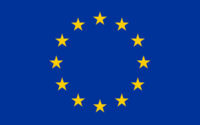“EVOLVE”
Where do we come from? One of the oldest and deepest questions for humanity is about the origin of life. This is not just about looking back, but inextricably connected to questions about the world we live in, and our future. Where are we heading? Are we alone in the Universe? Can life cope with self-inflicted phenomena such as climate change and virus pandemics? Driven by fundamental advances in biology, astronomy, physics, and chemistry, we are now making exciting progress, and starting to grasp some details about the origin of life on Earth and beyond.

What is EVOLVE about?
Evolve is all about complex systems and their role in the evolution of life. Firmly embedded in broad consortium. Evolve has a solid basis to progress efficiently and quickly. This will be done through a combination of four interconnected challenges:
- The origin and co-evolution of life and its host planet,
- The origin of complex life and of ecosystems,
- Predicting the future of life on Earth, and
- The universality of life’s properties across the universe.
Participating institutes
The Evolve Fellowship Programme is a joint initiative by six world-leading research institutes of two universities in The Netherlands (University of Groningen, Leiden University):
- Groningen Biomolecular Sciences & Biotechnology Institute
- Groningen Institute for Evolutionary Life Sciences
- Kapteyn Astronomical Institute
- Leiden Institute of Chemistry
- Stratingh Institute for Chemistry
- Zernike Institute for Advanced Materials
Supervisors
Within Evolve, we have a pool of 20 supervisors. This gives you the opportunity to work directly with top-level academics who have won prestigious prizes and grants, such as the Nobel Prize, ERC Advanced Grant and NWO TOP grant.
Many supervisors have vast experience as institute directors or board members, are members of esteemed platforms such as the Royal Netherlands Academy of Arts and Sciences (KNAW) or the Netherlands Organisation for Scientific Research (NWO), and/or have much experience with European training or networking programmes.
Apart from their high quality scientific and managerial experience, all Evolve supervisors have their own research group and are experienced in supervising researchers, both on PhD and post-doc level.
